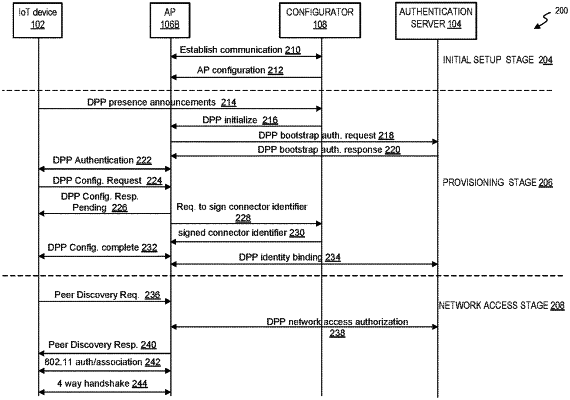| CPC H04L 63/105 (2013.01) [G06F 21/45 (2013.01); G06F 21/604 (2013.01); H04L 9/3242 (2013.01); H04L 63/205 (2013.01); G16Y 30/10 (2020.01)] | 17 Claims |

|
1. A method comprising:
receiving, by an authentication server, a Device Provisioning Protocol (DPP) network access authorization request from an access point (AP) communicating with an Internet of Things (IoT) device, wherein the DPP network access authorization request comprises a connector identifier, wherein the connector identifier is a hash of a public network access key of the IoT device;
determining, by the authentication server, validity of the connector identifier; and
in response to determining that the connector identifier is valid,
determining, by the authentication server, a configurable policy from a set of configurable policies that is applicable to the IoT device, wherein the configurable policy comprises of network permissions, and
transmitting by the authentication server, the network permissions to the AP for connecting the IoT device to a wireless network;
receiving, by the authentication server, a DPP bootstrap authorization request from the AP communicating with the IoT device, wherein the DPP bootstrap authorization request comprises a hash of a public bootstrapping key of the IoT device;
determining, by the authentication server, if the hash of the public bootstrapping key is valid; and
in response to determining that the hash of the public bootstrapping key is valid, transmitting, by the authentication server, the public bootstrapping key for the IoT device to the AP.
|